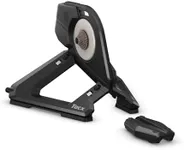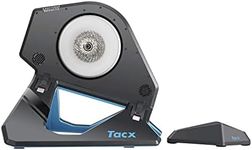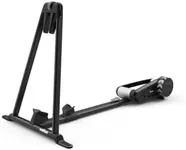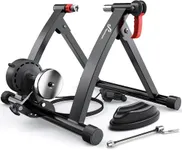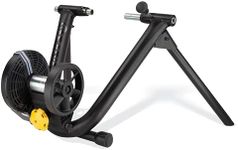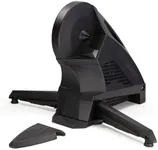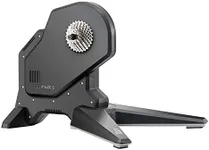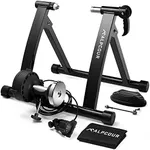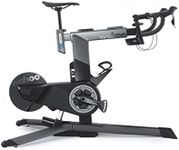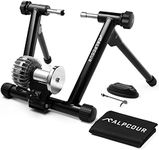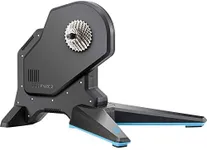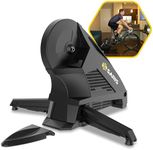Buying Guide for the Best Trainer For Zwift
When choosing a trainer for Zwift, it's important to consider several key specifications to ensure you get the best experience for your indoor cycling workouts. Zwift is a popular virtual cycling platform that requires a reliable and compatible trainer to provide accurate data and a realistic riding experience. By understanding the key specs, you can make an informed decision that matches your fitness goals and preferences.Type of TrainerThere are three main types of trainers: wheel-on, direct drive, and smart bikes. Wheel-on trainers are the most basic and require you to attach your bike's rear wheel to the trainer. Direct drive trainers replace your bike's rear wheel and provide a more stable and accurate experience. Smart bikes are all-in-one units that don't require a separate bike. The type of trainer you choose will depend on your budget, space, and how serious you are about your training. For casual users, a wheel-on trainer might suffice, while more dedicated cyclists might prefer the accuracy and stability of a direct drive trainer or smart bike.
Resistance TypeTrainers can use different methods to create resistance, such as magnetic, fluid, or electromagnetic. Magnetic trainers are typically more affordable but may not provide the smoothest ride. Fluid trainers offer a more realistic road feel but can be prone to leaks. Electromagnetic trainers, often found in smart trainers, provide the most accurate and adjustable resistance, making them ideal for serious training and Zwift's interactive features. If you want a more immersive and responsive experience on Zwift, an electromagnetic trainer is the best choice.
ConnectivityFor Zwift, it's crucial that your trainer can connect to your device via Bluetooth or ANT+. This allows the trainer to communicate with the Zwift app, providing real-time data and adjusting resistance based on the virtual terrain. Most modern smart trainers come with both Bluetooth and ANT+ connectivity. Ensure that the trainer you choose is compatible with your devices and has reliable connectivity to avoid interruptions during your workouts.
Power AccuracyPower accuracy refers to how accurately the trainer measures your power output, usually expressed as a percentage. Higher accuracy means more reliable data, which is important for tracking your progress and training effectively. Trainers with power accuracy within +/- 1-2% are considered very accurate. If precise data is important for your training, look for a trainer with high power accuracy. Casual users might not need the highest accuracy, but competitive cyclists will benefit from more precise measurements.
Noise LevelThe noise level of a trainer can be an important factor, especially if you live in an apartment or have family members nearby. Trainers can vary significantly in how much noise they produce. Direct drive and smart trainers tend to be quieter than wheel-on trainers. If you need a quieter setup, look for trainers specifically marketed as low-noise or quiet. This will help you maintain a peaceful environment while you train.
CompatibilityEnsure that the trainer you choose is compatible with your bike. Check the trainer's specifications for compatibility with different wheel sizes, axle types, and drivetrain setups. Some trainers come with adapters to fit a variety of bikes. If you have a unique bike setup, double-check compatibility to avoid any issues. This is especially important if you have a bike with thru-axles or disc brakes.
Portability and StorageConsider how easy it is to move and store the trainer when not in use. Some trainers are more compact and foldable, making them easier to store in small spaces. If you need to move the trainer frequently or have limited space, look for a model that is lightweight and easy to fold. This will make it more convenient to set up and put away after your workouts.
